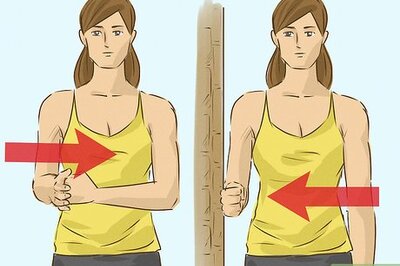
views
On June 2, a triple train accident in Odisha’s Balasore district killed over 270 people and left more than a thousand injured. The Odisha government along with administrations of some other states as well as the Centre worked on a war footing to provide rescue and relief services. News18 spoke to inspector general of police (Eastern Range) Himanshu Kumar Lal and superintendent of police (Balasore) Sagarika Nath about their crucial roles in dealing with the aftermath of the devastating crash, the various steps taken by authorities, the many challenges, and some uncommon experiences.
“At 7 pm, I got the news about a train derailment and I got a call from the DG too. I spoke to the local block chairman and found out that it was a massive accident. At that time I spoke to the SP and got information about 7 deaths. I came to know that there was no phone signal in the area. I immediately called the CMO before I reached the spot. The CMO responded quickly. They asked me how many casualties. I told them more than 150 dead and over 1,000 injured. I told them we would need 400 ambulances and a huge number of people. They told me that everything would be mobilised. The instruction was clear that we have to save lives, not thinking about money and logistics. Logistics and other support were provided within an hour. Senior officers too were rushed," said Lal.
One platoon of Odisha Disaster Rapid Action Force (ODRAF) was moved immediately, he told News18. “We saw people crying and there were bodies all around. A green corridor was created immediately. The SP managed forces. I directed all the officers there. We started the rescue work and the local villagers were a huge help. The priority was to save those injured," he added.
SP Nath said her sources and the sub-divisional police officer informed her that a big accident had taken place. By 7.15pm, police teams had reached the spot and a platoon in Soro city of Balasore had been mobilised, she told News18.
“When I reached at 7.25pm, I realised the problem was a narrow road from the highway. So we blocked the highway and created a green corridor. Our primary concern was critical patients. I could see a tide of people. They were injured. Many wanted to know where Kolkata was. They had no idea where to go. Our team was giving them directions. Saving lives was our main concern and that’s what our chief minister’s direction was: to save people in the golden hour. We were lucky that we got support from the local people. I saw my SDPO covered in blood. There were bodies all around. It was shocking. He told me he himself was transporting bodies. They had started to pile up, so we had to create a makeshift morgue in a school. We got huge support from the CMO. Everything that was needed was given to us. The focus firstly was on rescuing critical patients in any vehicle available. We also had to mobilise JCBs," she said.
There were ample doctors, ambulances, and resources, and there were no problems with logistics, said the IG. “At that time, we had to demarcate the injured. Our CM says every life has to be saved. We were just following that. The
biggest challenge was the tragedy itself. So many lives were lost. So many injured people were confused. Some were losing their temper, which is natural. We had to set up a lighting system. The phone network was a challenge, a big challenge," he told News18.
For Nath, the identification of the bodies was the real test. “First we shifted then to Balasore hospital. But as the number increased, we realised we couldn’t send so many cars. So we created a makeshift morgue. Maintaining an exact count of casualties was also a challenge. Bodies also had to be kept decently. We took photographs and shifted them where all the bodies were kept and tagged them there. People came later and tried to identify them," she said.
Recalling some unforgettable encounters, Lal said there was the body of a child with a doll. “Nobody was ready to take it out…Everyone was in tears. Another person was alive but a rod had pierced his leg. We had to take out that rod first," said the IG.
SP Nath described the moment when she walked to the site where the coaches were upside down. “I could see a mother desperately trying to push her baby (1 to 3 years old) out of a window. She wanted that even if she is not saved, her baby should live. I should not be saying this, but I took that baby and gave it to my PSO. I was shocked. We managed to rescue the mother also. There were many such instances: mothers and fathers searching for kids…there was so much darkness. As we were in uniform, everyone asked us questions," she said.
The administration, civilians, and ambulances all worked together, going above and beyond the call of duty, said IG Lal. He added that some ‘heroes’ have been identified who will be honoured by the state government. Lal said that phone communication services need some improvement to deal with such situations.
“We generally handle bodies linked to murder cases, but at a time when you see hundreds and hundreds of bodies, it is difficult, said Nath. “Our SOP helped us react quickly. If all people come together, this would not happen. The moment other agencies came, we tried to ensure a green corridor was present. We tried to manage the luggage. We set up a lost-and-found section. We recovered about 500 mobile phones and more than 100 wallets. All agencies working as one team made the difference."
















Comments
0 comment